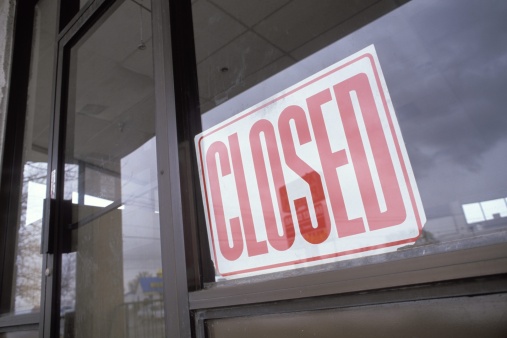 When a commercial tenant files for bankruptcy is not often a surprise to its landlord. Rent payments may arrive late, financial covenants may be missed, and the tenant may become generally unresponsive in the pre-bankruptcy period.
When a commercial tenant files for bankruptcy is not often a surprise to its landlord. Rent payments may arrive late, financial covenants may be missed, and the tenant may become generally unresponsive in the pre-bankruptcy period.
While the provisions of the bankruptcy code governing the treatment of leases are among the more complex in the code, this article provides guidance to landlords in navigating a commercial tenant’s bankruptcy and maximizing recovery on its claims.
Download this Article: When a Commercial Tenant Files for Bankruptcy (PDF)
Beware of the Automatic Stay when a commercial tenant files for bankruptcy
Upon learning a tenant files for bankruptcy , the landlord must abide the automatic stay. The automatic stay restrains actions to collect on a claim against the tenant, including enforcement of a judgment, creation of a lien, or otherwise attempting to recover any of the tenant’s property. The landlord may not, therefore, send a default letter or prosecute an eviction action. While limited exceptions to this general rule exist, a landlord should consult with counsel before taking any post-bankruptcy legal action against its commercial tenant. In some cases, the court may impose sanctions for willful violations of the automatic stay.
Monitor the case and gather pertinent documents when a commercial tenant files for bankruptcy
Carefully monitor a tenant’s bankruptcy case from the outset by reviewing all pleadings sent in connection with the case. Often, motions filed in the first days of a bankruptcy case set critical deadlines and tee-up for court approval mechanisms for funding the debtor through bankruptcy, including authority for the debtor’s use of assets (assets that may be subject to a landlord lien) during the course of the case. Pay special attention to the deadlines for filing proofs of claim and for filing proofs of rejection damages, each of which require affirmative landlord action to recover unpaid sums under the lease. Closely review any budgets filed by the tenant to confirm that the budget includes post-petition rent payments in the correct amounts. Consider retaining counsel to appear in the case, which will ensure that you receive prompt notice of events in the case and relevant deadlines.
Gather all documentation pertinent to the bankrupt tenant in order to readily assert claims in the bankruptcy case, including to support a motion for relief from the automatic stay if it becomes necessary. Ensure you have copies of the following:
• A fully executed copy of the lease, any amendments and guaranties
• Records of rent payments, both before and after the bankruptcy filing
• Records of maintenance obligations and payments
• Default correspondence
• Any property searches obtained showing liens created by the tenant
Disposition of the lease and payment of rent and other sums when a commercial tenant files for bankruptcy

Whether or not a commercial landlord desires to continue its business relationship with the bankrupt tenant, the bankruptcy code allows the debtor to exercise its business judgment to determine whether to assume (retain) or reject (terminate) an unexpired nonresidential lease.
If the tenant assumes the lease, it must make the landlord whole for any unpaid rent and any pecuniary losses stemming from the defaults under the lease. The tenant must also provide to the landlord “adequate assurance” of its future performance under the lease. With respect to shopping center leases, the bankrupt tenant must meet a higher standard than other tenants in order to assume the lease. The shopping center tenant must show: (a) that the debtor, as reorganized, or its assignee, will have at least the same ability to pay the rent as the initial lessee; (b) that any “percentage rent” will not substantially decline; (c) that the assumption of the lease will be subject to the all of the provisions of the lease, including provisions relating to radius, location and/or exclusivity; and (d) that the assumption thereof will not breach the provisions of any other lease, financing agreement or master agreement relating to the shopping center, nor disrupt the tenant mix in the shopping center.
If the tenant rejects the lease, it must return possession of the property to the landlord. Unlike the landlord to an assumed lease who is made whole upon assumption, the landlord to a rejected lease retains only: (a) an unsecured claim for unpaid pre-petition rent or other amounts; (b) an administrative (dollar-for-dollar) claim for unpaid post-petition rent; and (c) a rejection damages claim (unsecured) for future rent that would have been due but for the rejection. While the landlord is entitled to rejection damages, such damages are capped. Rejection damages are capped at the greater of one (1) year of rent or the rent for fifteen percent (15%), not to exceed three (3) years, of the remaining term of the lease. Rejection damages may be cut-off entirely if the landlord is able to re-lease the space for rent that will cover the claim.
Regardless of whether the tenant assumes or rejects the lease, tenants must pay post-petition rent. The bankruptcy code requires a tenant to comply with its obligations under a lease during the pendency of the case. If the tenant fails to comply with the lease terms, the landlord may have grounds for relief from the automatic stay to pursue eviction. Whether cause exists to grant relief from the automatic stay will depend on the particular circumstances of each case. For example, if the post-petition rent is not being paid, if insurance coverage does not remain in force or the property is in danger, a bankruptcy court may find cause for relief from the stay. On the other hand, if the tenant cannot continue its business without operating in the leased premises, a court may consider the property necessary for the tenant’s reorganization and be less likely to grant relief from the automatic stay. Experienced bankruptcy counsel can help assess the merits of any stay relief motion and should be consulted if the tenant fails to uphold any of its post-petition obligations under the lease.
PRE-BANKRUPTCY PLANNING: Hedging your risks when a commercial tenant files for bankruptcy
Landlords can hedge risks when a tenant files for bankruptcy by obtaining additional security to secure the lease,
which will maximize potential recovery in the event of a tenant bankruptcy.
Consider requiring a significant security deposit, including in the form of a letter of credit. Security deposits make a landlord a secured creditor to the extent of the deposit. In some cases, landlords can offset rent payments with a security deposit, which can enhance recovery to the landlord if the tenant ultimately rejects the lease.
Obtaining a third-party guaranty (from an individual or affiliate entity) of the tenant’s obligations under the lease affords a landlord with non-bankruptcy collection opportunities. In most cases, guarantors, unlike debtors, can be pursued for the full amount of the debt owing without respect to the cap on rejection damages that applies to a debtor.
In short, strong lease drafting coupled with vigilant enforcement of the landlord’s rights in and out of the bankruptcy court can make a significant difference in timely maximizing recovery from a defaulted tenant. The contents of this article are for informational purposes only and none of these materials is offered, nor should be construed, as legal advice or a legal opinion based on any specific facts or circumstances.
For More Information on what to do when a commercial tenant files for bankruptcy:
 Julie M. Murphy, Esquire
Julie M. Murphy, Esquire
Hyland Levin LLP
6000 Sagemore Drive, Suite 6301
Marlton, NJ 08053-3900
(p) 856.355.2900
(f) 856.355.2901
www.hylandlevin.com


